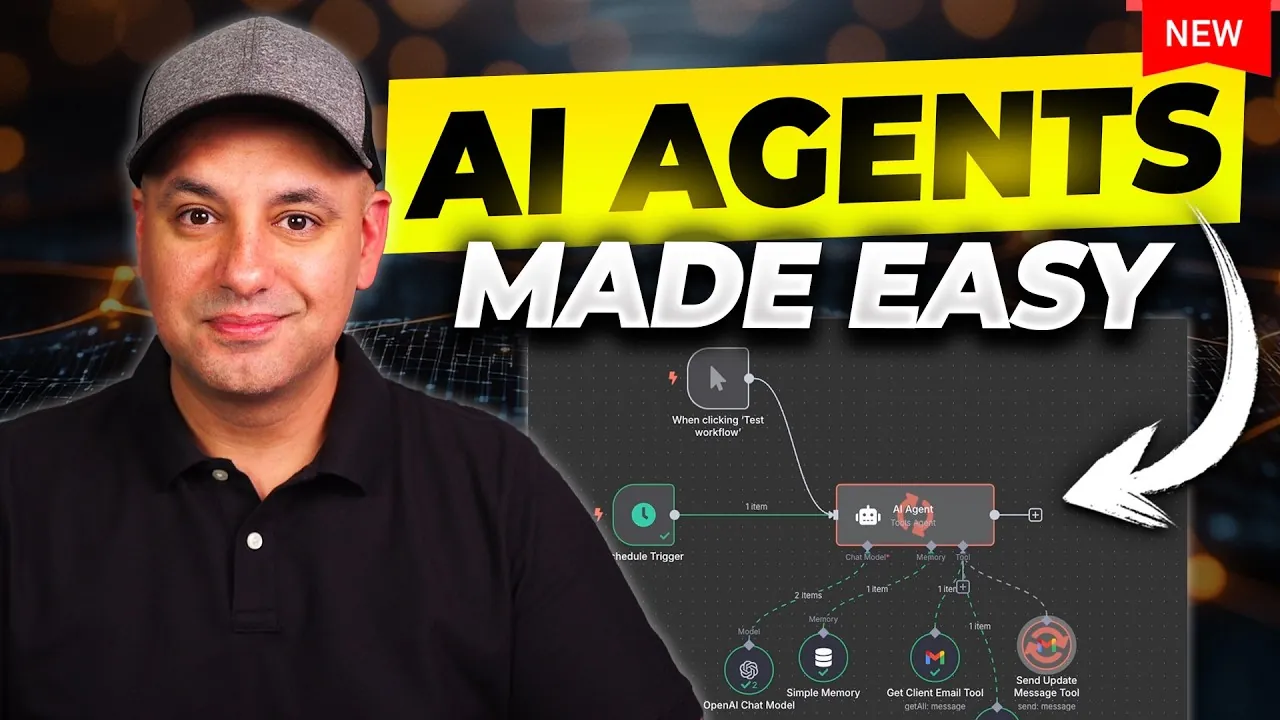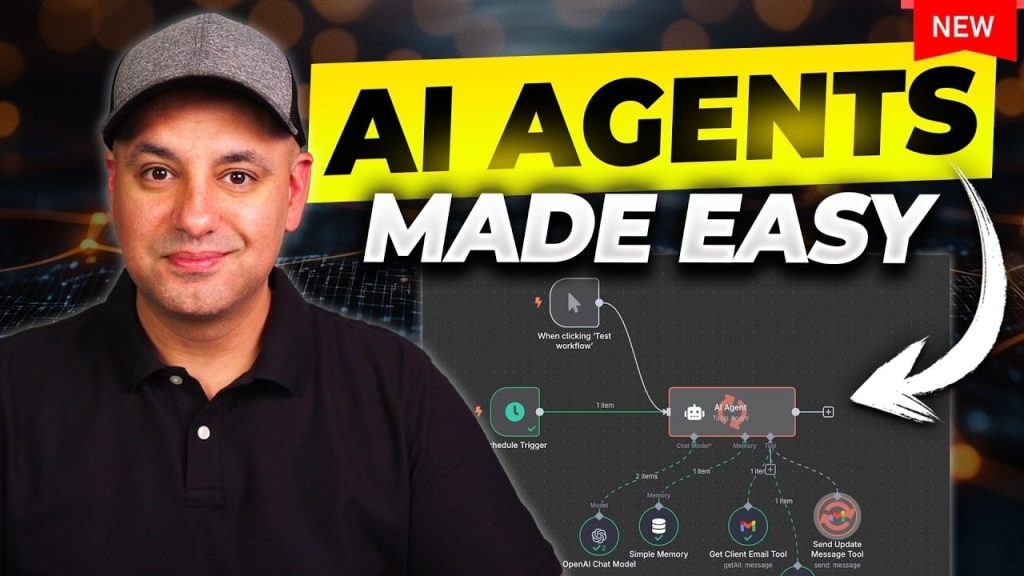
What if your next coworker wasn’t human—but a tireless, adaptable, and highly intelligent program capable of managing your inbox, solving customer issues, and even strategizing your marketing campaigns? Enter the world of AI agents, a new evolution in artificial intelligence that’s reshaping how work gets done. Unlike traditional automation tools that rigidly follow scripts, AI agents think, learn, and act autonomously, adapting to new information and complex scenarios with remarkable precision. They’re not just tools; they’re collaborators, capable of handling everything from mundane tasks to intricate decision-making. The question isn’t whether these agents will transform industries—it’s how soon.
In this feature, Skill Leap AI unravel the mechanics behind AI agents and explore their potential to transform workflows across industries. You’ll discover how these autonomous programs integrate reasoning, memory, and tool usage to achieve goals with minimal human input. From personal assistance to customer service, AI agents are proving to be versatile fantastic options. But what makes them so different from the automation tools of the past? And how can businesses and individuals harness their power effectively? As we delve deeper, you’ll gain insights into their core components, real-world applications, and the exciting possibilities they unlock. The future of work might already be here—are you ready to meet it?
AI Agents Overview
TL;DR Key Takeaways :
AI agents are autonomous software systems that combine reasoning, learning, and action execution to handle complex tasks with minimal human intervention, surpassing traditional automation tools and chatbots.
Key features include advanced reasoning, memory systems for personalized responses, and seamless integration with external tools like Gmail, Slack, and Google Drive.
AI agents operate through a structured process involving goal setting, data gathering, decision-making, and action execution, allowing adaptability to dynamic environments.
Applications span industries such as customer service, marketing, social media management, personal assistance, and lead management, showcasing their versatility and efficiency.
Building AI agents has become more accessible with platforms like N8N, allowing users to design workflows, integrate tools, and enhance functionality with features like multi-agent systems and dynamic inputs.
Understanding AI Agents
AI agents are intelligent software systems designed to think, learn, and act autonomously. They go beyond basic automation by adapting to new information and making context-aware decisions. Powered by innovative artificial intelligence (AI) models, such as large language models (LLMs) like GPT, Claude, or Gemini, these agents can perform a wide range of tasks, from answering customer inquiries to managing intricate workflows.
Key characteristics of AI agents include:
Reasoning and Decision-Making: They analyze data and determine the most effective course of action.
Tool Integration: Seamlessly connect with external platforms like Gmail, Slack, or Google Drive to execute tasks efficiently.
Memory Systems: Retain and use past interactions to improve performance and provide personalized responses over time.
Unlike traditional automation tools, which follow rigid workflows, AI agents dynamically adjust to changing inputs and contexts. For example, while a chatbot might answer a customer’s question about a product, an AI agent could process a refund, update the customer’s order status, or even recommend related products.
Core Components and Functionality
AI agents rely on several foundational components to operate effectively. These components work together to enable the agent’s adaptability and functionality:
AI Model: The core intelligence of the agent, often powered by LLMs, enables natural language understanding, reasoning, and decision-making.
Memory Systems: These systems allow the agent to store and reference past interactions, enhancing its ability to handle recurring tasks or provide tailored responses.
Tool Integration: AI agents connect with external tools and platforms to execute tasks seamlessly, such as managing emails, updating calendars, or processing transactions.
The process by which agents operate typically involves the following steps:
Goal Setting: A specific task or objective is defined for the agent, such as automating email responses or managing customer inquiries.
Information Gathering: The agent collects relevant data, such as customer messages, transaction histories, or real-time inputs.
Decision-Making: Using its reasoning capabilities, the agent determines the optimal course of action based on the available data.
Action Execution: The agent performs the required tasks, such as sending notifications, scheduling events, or generating reports.
How AI Agents Work: A Guide to Autonomous AI Tools
Master AI Agents with the help of our in-depth articles and helpful guides.
Applications Across Industries
AI agents are highly versatile and can be applied across numerous domains. Their ability to adapt and execute tasks autonomously makes them valuable in a variety of scenarios, including:
Social Media Management: Planning and scheduling posts, analyzing engagement metrics, and generating content ideas to enhance online presence.
Customer Service: Resolving billing issues, answering FAQs, managing support tickets, and providing personalized assistance to customers.
Personal Assistance: Filtering emails, drafting replies, organizing calendar events, and prioritizing tasks to improve productivity.
Lead Management: Tracking prospects, following up with leads, and updating CRM systems to streamline sales processes.
Web Scraping: Extracting and summarizing data from websites for research, analysis, or business intelligence purposes.
Marketing Automation: Creating targeted campaigns, managing social media strategies, and analyzing campaign performance to optimize marketing efforts.
Building and Enhancing AI Agents
Creating an AI agent has become increasingly accessible with the rise of visual workflow platforms like N8N. These platforms allow users to design and implement agents through intuitive drag-and-drop interfaces, making it easier to customize workflows and integrate external tools. To build an effective AI agent:
Clearly define the agent’s objectives and system prompts to ensure alignment with desired outcomes.
Integrate external tools such as Google Calendar, Gmail, or Slack to enhance the agent’s functionality and reach.
Test workflows thoroughly to verify that the agent performs tasks as intended and meets performance expectations.
Continuously refine processes based on feedback and performance metrics to improve efficiency and adaptability.
AI agents can also be enhanced with advanced features, such as:
Multi-Agent Systems: Coordinating multiple agents to handle complex, interconnected workflows and achieve broader objectives.
Customizable Triggers: Activating agents based on manual inputs, scheduled events, or chat-based commands to improve responsiveness.
Dynamic Inputs: Adjusting actions in real-time based on variables like user preferences, environmental data, or changing conditions.
Real-World Examples and Future Potential
AI agents are already transforming workflows in various industries. Some practical examples include:
Personal Assistant: Managing emails, prioritizing tasks, and proposing meeting times based on your schedule to save time and reduce workload.
Marketing Automation: Automating social media posts, analyzing engagement metrics, and suggesting content strategies to enhance brand visibility.
Customer Service: Resolving common issues, escalating complex cases, and providing personalized responses to improve customer satisfaction.
As their capabilities continue to evolve, agents are expected to play an even greater role in shaping the future of work and technology. Their ability to learn, adapt, and execute tasks autonomously positions them as a powerful tool for addressing modern challenges and driving innovation across industries.
Resources for Further Exploration
To deepen your understanding of AI agents and their potential, explore pre-built workflows on platforms like n8n or access tutorials on integrating AI with external tools. These resources can provide valuable insights and guidance for designing and optimizing agents tailored to your specific needs.
Media Credit: Skill Leap AI
Filed Under: AI, Top News
Latest Geeky Gadgets Deals
Disclosure: Some of our articles include affiliate links. If you buy something through one of these links, Geeky Gadgets may earn an affiliate commission. Learn about our Disclosure Policy.

